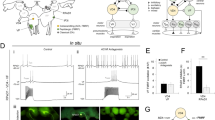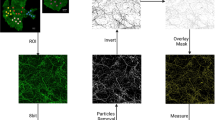Abstract
ADENINE nucleotides and nucleosides have been proposed as neurotransmitters1–3, in part based on their ability to inhibit spike activity in several peripheral1,4,5 and central2,5,6 sites. Only one preliminary study2 has utilised intracellular recording to determine mechanisms of action of the purines in neurones. Because of their large size and simplified input-output relationships, neurones of sympathetic ganglia are a favourable model for intracellular recording. Although several studies have shown effects of ATP on peripheral ganglia7,8, none utilised intracellular recording nor checked specificity of responses with other purine and pyrimidine nucleic acid components. Therefore, we examined the effects of several purine and pyrimidine derivatives by intracellular recording of bullfrog sympathetic neurones in explant cultures. Our findings show pronounced depolarisations with the di- and triphosphoribo derivatives of several pyrimidine and purine bases, with the uridine nucleotides emerging as the most potent of all the compounds.
This is a preview of subscription content, access via your institution
Access options
Subscribe to this journal
Receive 51 print issues and online access
$199.00 per year
only $3.90 per issue
Buy this article
- Purchase on Springer Link
- Instant access to full article PDF
Prices may be subject to local taxes which are calculated during checkout
Similar content being viewed by others
References
Burnstock, G. Pharmac. Rev. 24, 509–581 (1972).
Phillis, J. W. & Edstrom, J. P. Life Sci. 19, 1041–1054 (1976).
Pull, I. & McIlwain, H. Biochem. J. 130, 975–981 (1972).
Tomita, T. & Watanabe, H. J. Physiol., Lond. 231, 167–177 (1973).
Siggins, G. R., Hoffer, B. J., Bloom, F. E. & Ungerstedt, U. in The Basal Ganglia (ed. Yahr, M.) 227–248 (Raven, New York, 1976).
Bloom, F. E., Siggins, G. R., Hoffer, B. J., Segal, M. & Oliver, A. P. in Advances in Cyclic Nucleotide Research (edit. Drummond, G., Greengard, P. & Robison, G. A.) 603–618 (Raven, New York, 1975).
Feldberg, W. & Hebb, C. J. Physiol., Lond. 107, 210–221 (1948).
Theobald, R. J. & deGroat, W. C. Fedn Proc. 36, 290 (1977).
Padjen, A. L., Siggins, G. R. & Forman, D. S. Neurosci. Abs. 1, 813 (1975).
Araki, T. & Otani, T. J. Neurophysiol. 18, 472–485 (1955).
Salmoiraghi, G. & Weight, F. Anesthesiology 28, 54–64 (1967).
Sattin, A. & Rall, T. W. Molec. Pharmac. 6, 13–23 (1970).
Israel, M., Lesbats, B., Mennier, F. M. & Stinnakre, J. Proc. R. Soc. Lond. B 193, 461–468 (1976).
McMahan, U. J. & Kuffler, S. W. Proc. R. Soc. Lond. B 177, 485 (1971).
Author information
Authors and Affiliations
Rights and permissions
About this article
Cite this article
SIGGINS, G., GRUOL, D., PADJEN, A. et al. Purine and pyrimidine mononucleotides depolarise neurones of explanted amphibian sympathetic ganglia. Nature 270, 263–265 (1977). https://doi.org/10.1038/270263a0
Received:
Accepted:
Issue Date:
DOI: https://doi.org/10.1038/270263a0
This article is cited by
-
M‐type K+ currents in rat cultured thoracolumbar sympathetic neurones and their role in uracil nucleotide‐evoked noradrenaline release
British Journal of Pharmacology (2000)
-
Dual coupling of heterologously‐expressed rat P2Y6 nucleotide receptors to N‐type Ca2+ and M‐type K+ currents in rat sympathetic neurones
British Journal of Pharmacology (1999)
-
Activation of nucleotide receptors inhibits M-type K current [I K(M)] in neuroblastoma � glioma hybrid cells
Pfl�gers Archiv European Journal of Physiology (1994)
-
Inhibitory effect of adenosine on transmission in sympathetic ganglia
Naunyn-Schmiedeberg's Archives of Pharmacology (1984)
Comments
By submitting a comment you agree to abide by our Terms and Community Guidelines. If you find something abusive or that does not comply with our terms or guidelines please flag it as inappropriate.



